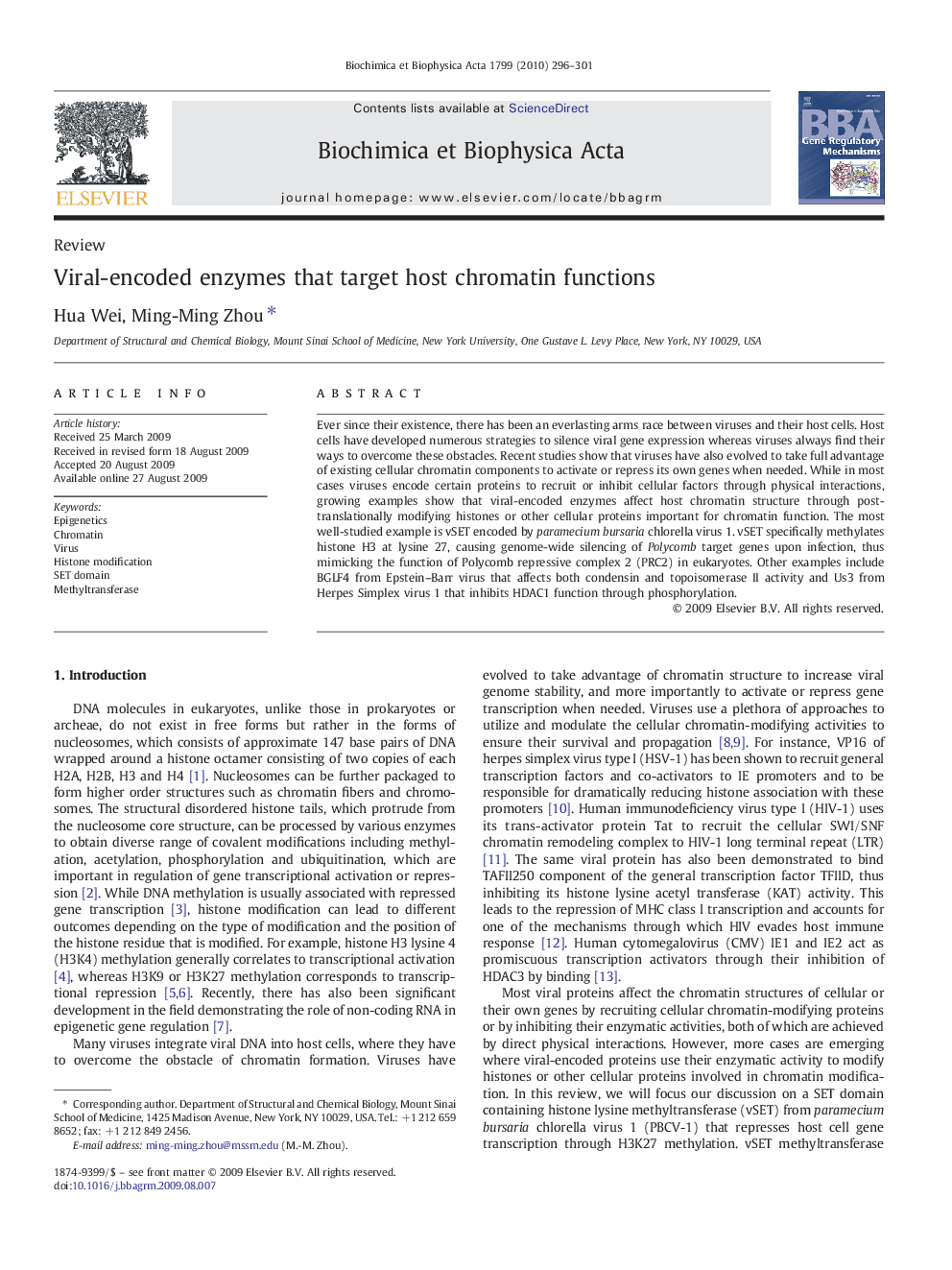| Article ID | Journal | Published Year | Pages | File Type |
|---|---|---|---|---|
| 1946857 | Biochimica et Biophysica Acta (BBA) - Gene Regulatory Mechanisms | 2010 | 6 Pages |
Abstract
Ever since their existence, there has been an everlasting arms race between viruses and their host cells. Host cells have developed numerous strategies to silence viral gene expression whereas viruses always find their ways to overcome these obstacles. Recent studies show that viruses have also evolved to take full advantage of existing cellular chromatin components to activate or repress its own genes when needed. While in most cases viruses encode certain proteins to recruit or inhibit cellular factors through physical interactions, growing examples show that viral-encoded enzymes affect host chromatin structure through post-translationally modifying histones or other cellular proteins important for chromatin function. The most well-studied example is vSET encoded by paramecium bursaria chlorella virus 1. vSET specifically methylates histone H3 at lysine 27, causing genome-wide silencing of Polycomb target genes upon infection, thus mimicking the function of Polycomb repressive complex 2 (PRC2) in eukaryotes. Other examples include BGLF4 from Epstein-Barr virus that affects both condensin and topoisomerase II activity and Us3 from Herpes Simplex virus 1 that inhibits HDAC1 function through phosphorylation.
Related Topics
Life Sciences
Biochemistry, Genetics and Molecular Biology
Biochemistry
Authors
Hua Wei, Ming-Ming Zhou,
